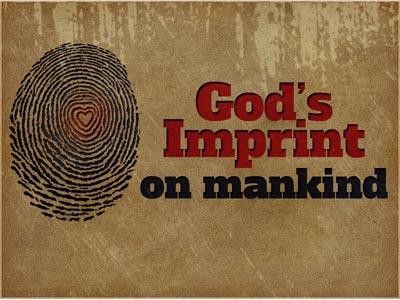-
Passion For The Temple Series
Contributed by Mark Schaeufele on Nov 28, 2017 (message contributor)
Summary: We are the church because we have the Holy Spirit living inside of us.
Passion For The Temple
Text: John 2:13-22
Introduction
1. Illustration: Daniel Webster offered excellent advice, saying, "If we work on marble it will perish. If we work on brass, time will efface it. If we rear temples, they will crumble to dust. But if we work on men’s immortal minds, if we imbue them with high principles, with just fear of God and love of their fellow-men, we engrave on those tablets something which time cannot efface, and which will brighten and brighten to all eternity.
2. In our text today we see Jesus passion for the Temple. However, we see much, much more. We see an understanding that would revolutionize the early Christian church and should exemplify our view of the church.
3. Jesus shows us that...
a. The church is about people
b. The church is people
4. Let's stand as we read John 2:13-22
Proposition: We are the church because we have the Holy Spirit living inside of us.
Transition: First we need to understand...
I. The Church Is About People (13-17).
A. Marketplace
1. As our text begins we see that Jesus was like any other ordinary Jew in his day. For "It was nearly time for the Jewish Passover celebration, so Jesus went to Jerusalem."
a. The Passover celebration took place yearly at the Temple in Jerusalem.
b. Every Jewish male was expected to make a pilgrimage to Jerusalem during this time, so Jesus went.
c. This was a week-long festival—the Passover was one day, and the Feast of Unleavened Bread lasted the rest of the week.
d. The entire week commemorated the freeing of the Jews from slavery in Egypt (Barton, Life Application New Testament Commentary, 381).
e. John mentions the festival much more than do the other Gospel writers, and this may well be part of his plan to bring out the messianic significance of Jesus.
f. What was foreshadowed in the great Passover deliverance of old was brought to its consummation in the sacrifice of Jesus (Morris, The New International Commentary on the New Testament – The Gospel According to John, 169).
2. However, when Jesus got to the Temple he shows that he was not your typical Jew. John tells us, "In the Temple area he saw merchants selling cattle, sheep, and doves for sacrifices; he also saw dealers at tables exchanging foreign money."
a. The Temple was on an imposing hill overlooking the city. Solomon had built the first Temple on this same site almost one thousand years earlier (949 B.C.), but his Temple had been destroyed by the Babylonians.
b. The Temple was rebuilt in 515 B.C., and Herod the Great had recently remodeled it.
c. God had originally instructed the people of Israel to bring from their own flocks the best animals for sacrifice.
d. This would make the sacrifice more personal. But the Temple priests instituted a market for buying sacrificial animals so the pilgrims would not have to bring their animals on the long journey.
e. In addition, the merchants and money changers were dishonest. The businesspeople selling these animals expected to turn a profit. The price of sacrificial animals was much higher in the Temple area than elsewhere.
f. In order to purchase the animals, travelers from other lands would need local currency, and the Temple tax had to be paid in local currency; so money changers exchanged foreign money, but made huge profits by charging exorbitant exchange rates.
g. Jesus was angry at the dishonest, greedy practices of the money changers and merchants, and he particularly disliked their presence on the Temple grounds.
h. They had set up shop in the Court of the Gentiles, making it so full of merchants that foreigners found it difficult to worship—and worship was the main purpose for visiting the Temple.
i. With all the merchandising taking place in the area allotted for the Gentiles, how could they spend time with God in prayer? No wonder Jesus was angry (Barton, 381).
3. So he sprung to action. "Jesus made a whip from some ropes and chased them all out of the Temple. He drove out the sheep and cattle, scattered the money changers’ coins over the floor, and turned over their tables. Then, going over to the people who sold doves, he told them, “Get these things out of here. Stop turning my Father’s house into a marketplace!”
a. Jesus made a whip of "ropes" and proceeded to drive the traders from the Temple with their goods.
b. It is clear that it was not so much the physical force as the spiritual power he employed that emptied the courts.
c. "It was surely the blazing anger of the selfless Christ rather than the weapon which He carried which really cleared the Temple Courts of its noisy, motley throng" (H.E.W. Turner).

 Sermon Central
Sermon Central



